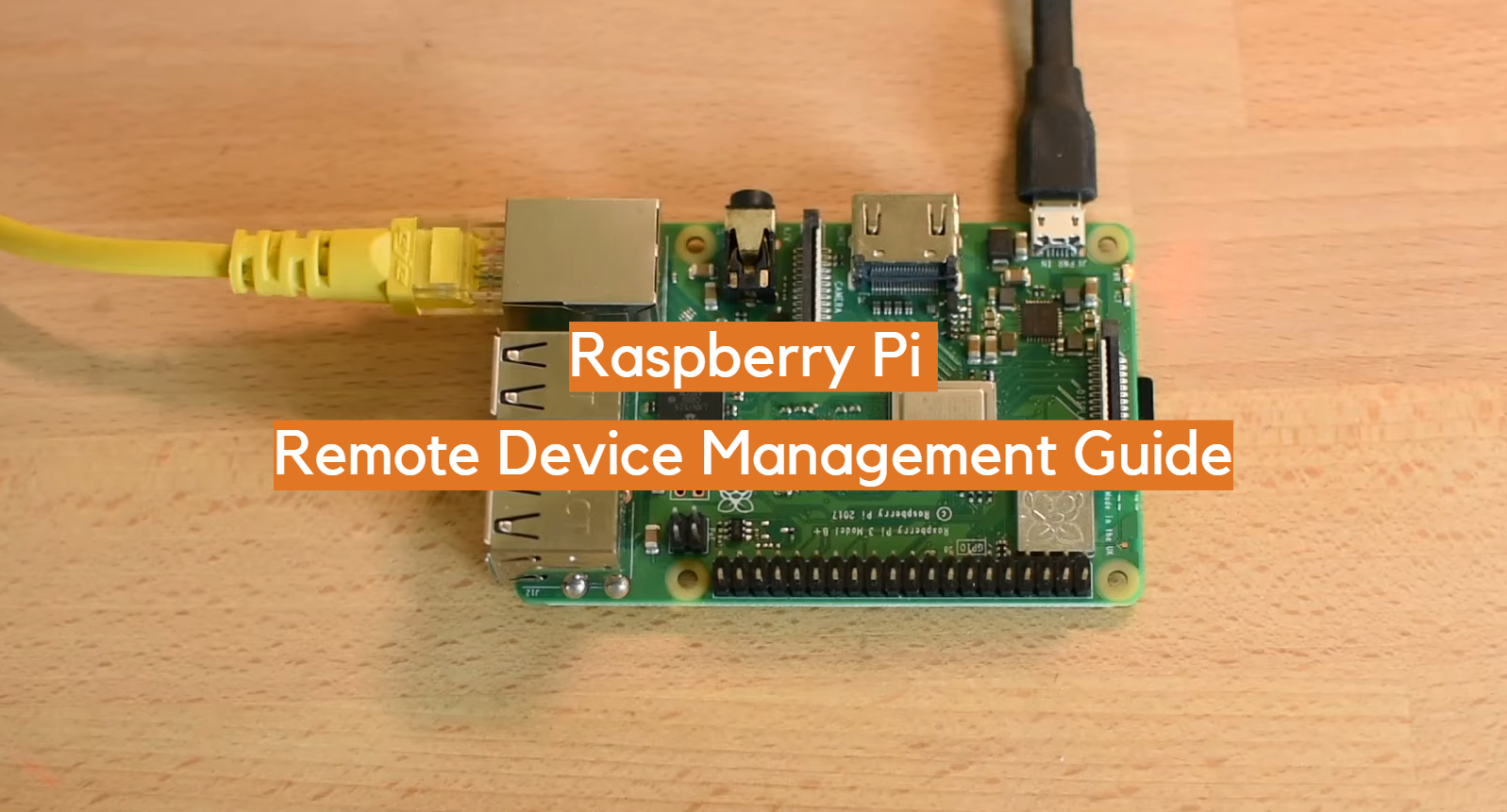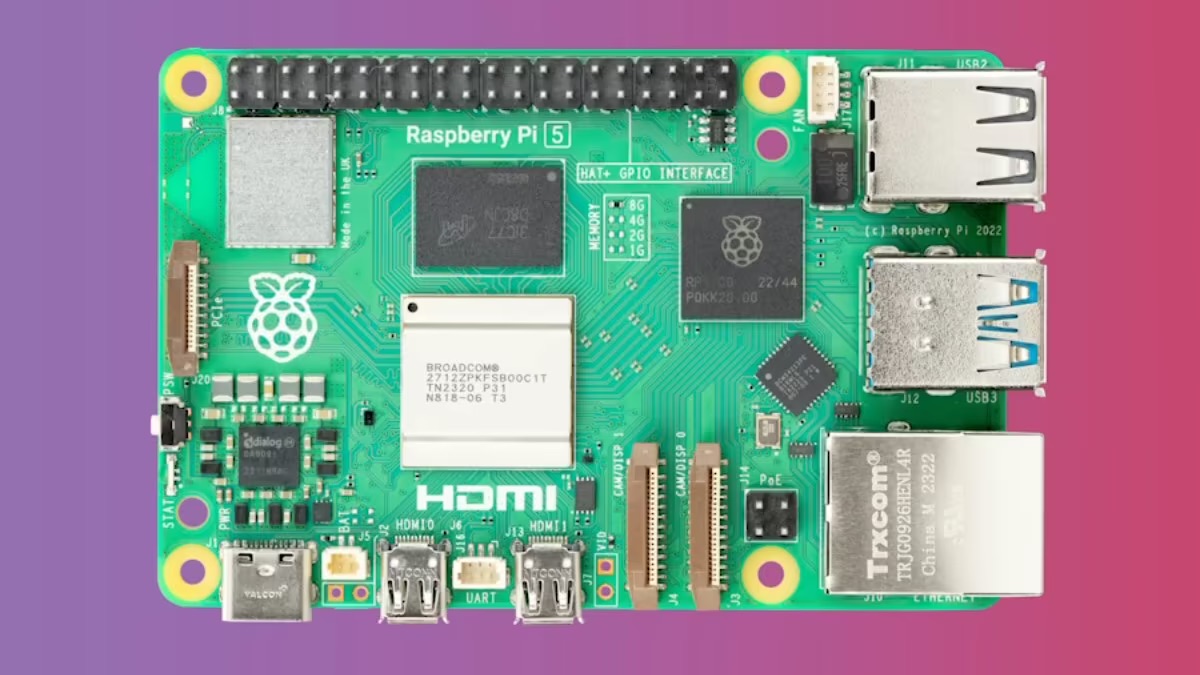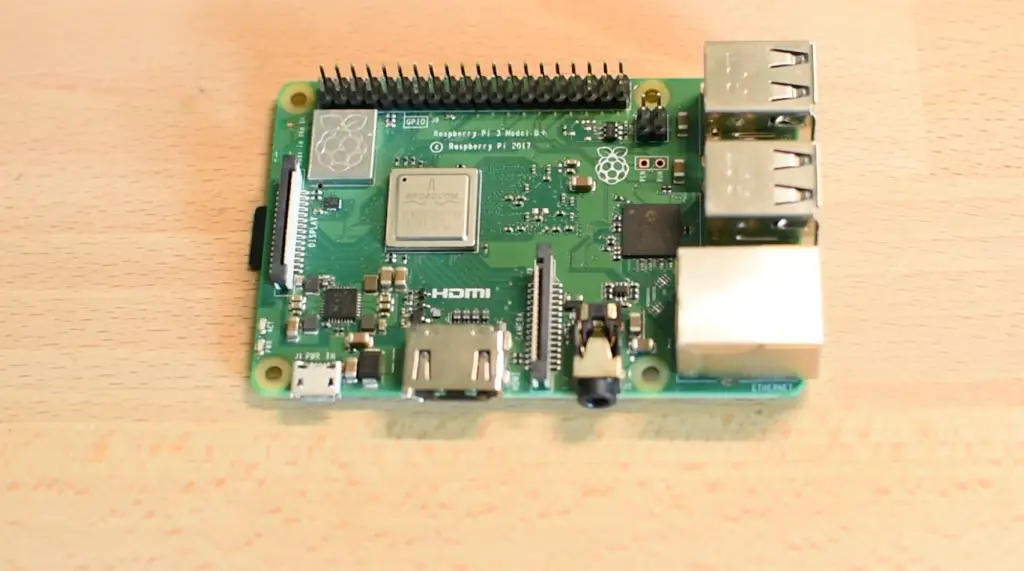Let’s be real, managing remote devices has never been easier than with Raspberry Pi. Whether you're a tech enthusiast, a small business owner, or just someone who loves tinkering with gadgets, Raspberry Pi remote device management can revolutionize how you handle your tech setup. Imagine controlling your IoT devices, running servers, or automating your home from anywhere in the world—all thanks to this tiny but powerful device. But hold up, it’s not just about plugging it in and hoping for the best. There’s a whole world of possibilities waiting for you to explore.
Now, if you're scratching your head wondering what the heck Raspberry Pi even is, don’t sweat it. Think of it as a mini computer that’s super versatile and affordable. It’s like having a Swiss Army knife for tech projects. And when it comes to managing remote devices, it’s a game-changer. You can set up your own cloud server, monitor sensors, or even control robots—all from the comfort of your couch.
But why should you care about Raspberry Pi remote device management? Well, in today’s digital age, having control over your devices no matter where you are is not just convenient, it’s essential. Whether you're monitoring a remote weather station, managing a fleet of IoT gadgets, or just keeping an eye on your home security system, Raspberry Pi gives you the power to do it all. So, buckle up, because we’re about to dive deep into the world of Raspberry Pi remote device management.
Read also:Mikaila Murphy Leak The Untold Story Behind The Viral Buzz
What is Raspberry Pi Remote Device Management?
Alright, let’s break it down. Raspberry Pi remote device management is basically the process of controlling and monitoring devices connected to your Raspberry Pi from a distance. It’s like being a tech wizard who can cast spells on their gadgets without even being in the same room. This can include anything from updating software to troubleshooting issues, all done remotely.
Here’s the deal: With Raspberry Pi, you’re not just limited to local control. You can set up your Pi to act as a server, a gateway for IoT devices, or even a surveillance system. The beauty of it is that you can manage all these functions from anywhere in the world, as long as you have an internet connection. It’s like having a personal assistant that never sleeps and can handle all your tech needs.
Why Raspberry Pi is Perfect for Remote Management
So, what makes Raspberry Pi so great for remote device management? First off, it’s compact and affordable, which means you don’t have to break the bank to get started. Plus, it’s super customizable, so you can tailor it to fit your specific needs. Whether you’re a DIY enthusiast or a professional developer, Raspberry Pi offers the flexibility and power you need to manage your devices like a pro.
Another big plus is the massive community of users and developers who are constantly creating new tools and resources. This means you’ll never run out of support or inspiration when it comes to managing your devices remotely. From tutorials to forums, the Raspberry Pi community has got your back.
Setting Up Your Raspberry Pi for Remote Access
Ready to get started? Setting up your Raspberry Pi for remote device management is easier than you might think. The first step is to install an operating system on your Pi. The most popular choice is Raspberry Pi OS, which is specifically designed for this little powerhouse. Once you’ve got the OS up and running, it’s time to configure your network settings.
Here’s a quick rundown of what you’ll need to do:
Read also:Oakley Rae Onlyfans Leak The Full Story You Need To Know
- Install Raspberry Pi OS on your microSD card.
- Connect your Raspberry Pi to your local network via Wi-Fi or Ethernet.
- Set up a static IP address to ensure your Pi is always accessible from the same address.
- Enable SSH (Secure Shell) for secure remote access.
Once you’ve completed these steps, you’ll be ready to start managing your devices from afar. It’s like giving your Raspberry Pi a remote control that works anywhere in the world.
Choosing the Right Tools for Remote Management
Now that your Raspberry Pi is set up, it’s time to choose the right tools for managing your devices. There are tons of options out there, but some of the most popular ones include:
- SSH: The go-to method for secure remote access.
- VNC: Allows you to access your Pi’s graphical interface remotely.
- Web-based dashboards: Perfect for monitoring and controlling IoT devices.
Each tool has its own strengths, so it’s important to choose the one that best fits your needs. For example, if you need to manage multiple devices at once, a web-based dashboard might be the way to go. But if you’re just looking for a simple, secure way to access your Pi, SSH could be all you need.
Key Features of Raspberry Pi Remote Device Management
So, what exactly can you do with Raspberry Pi remote device management? The possibilities are endless, but here are some of the key features you can expect:
- Remote software updates
- Real-time monitoring of device status
- Automated task scheduling
- Secure data transfer
These features make Raspberry Pi an ideal choice for anyone looking to streamline their tech setup. Whether you’re managing a single device or an entire network, Raspberry Pi gives you the tools you need to stay in control.
Security Considerations for Remote Management
Hold up a sec—before you dive headfirst into remote device management, it’s important to consider security. After all, giving remote access to your devices can open up some potential vulnerabilities. Here are a few tips to keep your setup safe:
- Use strong, unique passwords for all your devices.
- Enable two-factor authentication whenever possible.
- Regularly update your software to patch any security holes.
- Monitor your network for suspicious activity.
By taking these precautions, you can ensure that your Raspberry Pi remote device management setup is as secure as possible.
Applications of Raspberry Pi Remote Device Management
So, what can you actually do with Raspberry Pi remote device management? The answer is: pretty much anything you can think of. Here are just a few examples:
- Home automation: Control your smart home devices from anywhere.
- IoT monitoring: Keep an eye on sensors and other IoT devices in real-time.
- Remote server management: Run your own cloud server and manage it remotely.
- Surveillance systems: Set up a network of cameras and monitor them from afar.
These applications show just how versatile Raspberry Pi can be when it comes to remote device management. Whether you’re a homeowner, a business owner, or a tech enthusiast, there’s something for everyone.
Case Studies: Real-World Examples
Let’s take a look at some real-world examples of Raspberry Pi remote device management in action:
- A farmer uses Raspberry Pi to monitor soil moisture levels and automate irrigation systems.
- A small business owner manages their fleet of delivery vehicles using Raspberry Pi as a central hub.
- A hobbyist builds a home weather station and shares the data online for others to use.
These case studies highlight the diverse range of applications for Raspberry Pi remote device management. From agriculture to business to personal projects, the possibilities are truly endless.
Challenges and Solutions in Raspberry Pi Remote Management
Of course, no tech setup is without its challenges. When it comes to Raspberry Pi remote device management, some common issues include:
- Network connectivity problems
- Software compatibility issues
- Security concerns
But don’t worry—there are solutions for all of these challenges. For example, you can use a reliable internet connection and configure your network settings properly to avoid connectivity issues. As for software compatibility, sticking with well-supported tools and regularly updating your system can help keep things running smoothly.
Troubleshooting Tips
Here are a few troubleshooting tips to help you overcome common issues:
- Check your network settings if you’re having connectivity problems.
- Consult the Raspberry Pi forums if you’re stuck on a particular issue.
- Reboot your Pi if things aren’t working as expected.
By following these tips, you’ll be able to tackle most issues that come your way.
Best Practices for Raspberry Pi Remote Device Management
To get the most out of your Raspberry Pi remote device management setup, here are some best practices to keep in mind:
- Regularly back up your data to prevent loss.
- Keep your software up to date to ensure optimal performance.
- Document your setup so you can easily troubleshoot issues in the future.
By following these best practices, you’ll be able to maintain a smooth and efficient remote management system.
Staying Up-to-Date with Raspberry Pi
Finally, it’s important to stay up-to-date with the latest developments in Raspberry Pi technology. This means keeping an eye on new releases, updates, and community projects. By staying informed, you’ll be able to take advantage of the latest features and improvements to enhance your remote device management capabilities.
Conclusion
And there you have it—your ultimate guide to Raspberry Pi remote device management. From setting up your Pi to troubleshooting common issues, we’ve covered everything you need to know to take control of your devices from anywhere in the world. So, what are you waiting for? Get out there and start managing your tech like a pro!
Before you go, don’t forget to leave a comment or share this article with your friends. And if you’re feeling adventurous, check out some of our other articles on Raspberry Pi projects and tips. Happy tinkering, and may the Pi be with you!
Table of Contents
- What is Raspberry Pi Remote Device Management?
- Why Raspberry Pi is Perfect for Remote Management
- Setting Up Your Raspberry Pi for Remote Access
- Choosing the Right Tools for Remote Management
- Key Features of Raspberry Pi Remote Device Management
- Security Considerations for Remote Management
- Applications of Raspberry Pi Remote Device Management
- Challenges and Solutions in Raspberry Pi Remote Management
- Best Practices for Raspberry Pi Remote Device Management
- Staying Up-to-Date with Raspberry Pi


